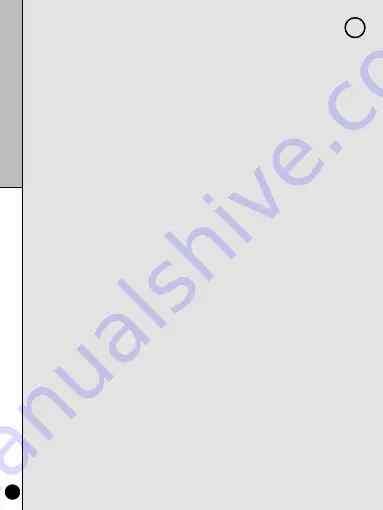
6
SK
ATEBO
ARD
6. Maintenance instructions
Skateboards count as technical sport and leisure equipment
and are subject to wear depending on the way they are
driven. Regular and intensive maintenance is therefore
imperative for your safety.
6.1 Deck
Check the deck about cracks, damage or slivers. Please
check also if the deck is maybe broken. Take attention at the
Security Label on the deck to see if your skateboard is suit-
able for jumps or not. If you find cracks, damage or slivers
then you have to change your deck to prevent any injuries.
You can buy a new deck in any specialised shops.
6.2 Changing the wheels
It is natural that the wheels will show signs of wear after
a while. How fast these signs of wear appear is subject to
several skating conditions: The kind of skating performed,
the skating surface, the height and weight of the skater, the
weather conditions, the material and rating (soft of hard)
of the wheels.
When the wheels show uneven wear or are completely
worn out, they should be changed. You can buy new wheels
in specialised shops.
To change the wheels, loosen the wheel nut, pull the
old wheels off the axle and replace with the new wheels
(either with new bearings or your old ones fitted to the
new wheels), replace the wheel nut, taking care that the
self securing ring of the wheel nut sits fully on the axle.
Do not damage the self-securing part of the nut during
this operation. For safety reasons, we recommend to use
self-securing nuts only once.
6.3 Changing the wheel bearings
The quality and maintenance of the bearings is vital for the
usability of your skateboard.
We only use closed, pre-greased bearings. The grease liq-
uefies when the skates are used, making the bearing faster.
Our bearings, therefore, do not need to be re-greased.
Bearings should be cleaned with a dry cloth when neces-
sary. Avoid dusty, oily or wet surfaces.
Bearings have become wet during skating, they must be
rubbed dry with a dry cloth. Worn out bearings must be
replaced.
After taking off the wheel from the chassis, remove the bear-
ing with the aid of a screwdriver (save the distance ring which
is inserted between the two bearings). After finishing cleaning
or the change of bearings, first push one bearing into the
wheel, then turn the wheel around, insert the distance ring
and then push the second bearing into the wheel.
7. Troubleshooting
7.1 Wheels or bearings emit a loud noise
Loosen the wheels and remove the bearings for cleaning.
Rub the bearings with a dry cloth. Inspect the distance ring
and the bearing axles for play. If necessary, replace the old
bearings for new ones.
7.2 Wheels do not turn lightly
New wheels or bearings need to be “run in“ before they will
turn lightly. With pre-greased bearings, the grease must
liquefy (by turning for a while, which will heat the grease);
this will speed up the bearing. Bearings are fitted wrongly.
Screws are fitted too tightly.
7.3 Wheels are wearing down too quickly
The kind of surface, the skating style as well as the weight of
the skater influence the life of the wheels.
The wrong kinds of wheels have been fitted for the surface,
the skating style or the weight of the skater. Try using
wheels with a different rating (harder/softer)
7.4. Problems tightening the wheel nuts
Tighten the wheel nuts so tightly, that the wheels
have not play on the axle, but not as tight to block
the wheels on the axle. Attention: The self-securing ring of
the wheel nut must be fully on the axle!
8. Ground rules for safety
1. Pay attention to the condition of your skateboard.
2. Inspect all screws, nuts and other fastening for tight fit.
3. Inspect and clean the deck, wheels and bearings
regularly.
4. Take care that all screws, nuts and other fastenings are
secured against accidental loosening (self securing
properties).
5. Do not modify your skateboard in a way that could
compromise safety.
6. Remove sharp edges which have been caused by use.
7. As a beginner, only use level surfaces. Ride down gentle
slopes at first. Then ride slopes where your speed is only
as fast as you can run off the board without failing.
8. Avoid too high a speed. As a rule, never increase your
speed above running speed.
9. Never let yourself be pulled by vehicles of any
description.
10. Always wear safety gear.
11. Before attempting to skate on open ground, learn the
basis skills of skating.
12. Be alert and careful at all times.
13. Always skate in a controlled manner.
14. Always skate on the correct side of pavements and
streets.
15. Overtake pedestrians, cyclists and other skaters on
the correct side.
16. Avoid water, oil, potholes and very rough surfaces.
17. Always follow traffic rules and local by-laws.
18. Avoid areas with heavy traffic.
19. Always respect pedestrians right of way.
20. Note that skating on public highways is generally not
allowed! You may skate on pavements and other public
spaces only when other users are not inconvenienced.
We recommend the use of skate parks.
21. Join a club in your area and learn more.
9. Spare parts
You can buy spare parts in specialized shops or the special-
ized departments of department stores
ENGLISH
Summary of Contents for FREE bul
Page 18: ......


















